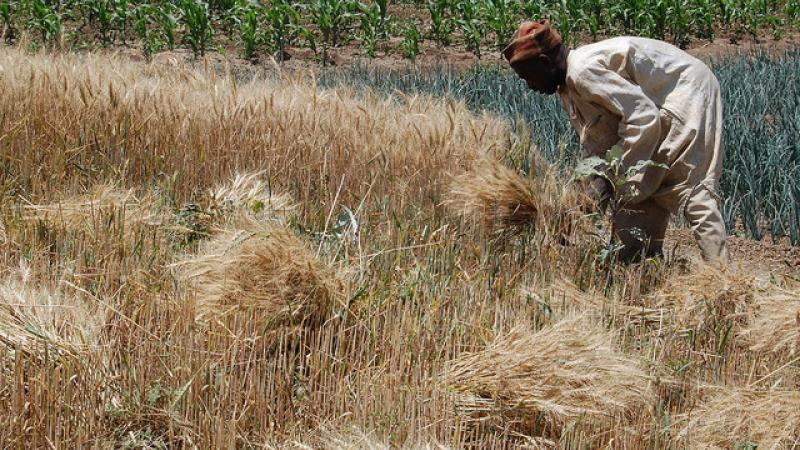Agriculture and climate change: how can we strengthen resilience and raise productivity?

The dry areas are highly vulnerable to the impacts of climate change. Rising temperatures and increasing water scarcity – already bad – are expected to get significantly worse. Failure to invest in agricultural research for development will affect our ability to address food insecurity and instability in these fragile regions.
The dry areas are fragile regions highly vulnerable to the effects of climate change. The Intergovernmental Panel on Climate Change (IPCC) predicts that over the coming decades these marginal areas will experience higher temperatures, more frequent droughts, and increasing water scarcity. In the Middle East and North Africa, for instance, climate change will exacerbate pressures on the region’s dwindling water supplies – per capita renewable water resources are predicted to drop from 1100 m3 per year to 550 m3 per year by 2050.
Declining productivity
What does this mean for agriculture and food production? In short, declining productivity, shorter growing seasons, and less cultivable land. If temperatures rise by 4 ° C, as some models predict, vast swathes of the dry areas would see their growing seasons cut by more than 20%.
In North Africa, depending on the model used, rising temperatures and increasing water scarcity could cause rain-fed cereal production to decline by as much as 6.5%, and production from the region’s grasslands by 49-33 %. In West Asia, predictions suggest that cereal production could decline by 3%, and production from the region’s woodlands by 14-15%.
A reduced production capacity could exacerbate import dependence – already a growing problem across the dry areas. The Near East and North Africa, for instance, is the world’s highest food deficit region. The Middle East currently imports approximately USD 35 million of food annually, and this looks set to rise to 70 Billion USD over the next two decades as climate change impacts crop yields and the region’s population rises. Dependence is also a growing issue in other regions with vast arid and semi-arid areas, such as Sub-Saharan Africa.
The threat of instability
These trends threaten to substantially increase food insecurity. The dry areas worldwide are home to some 2.5 billion people – 80% of whom struggle to get by on less than 2 USD per day – and continued dependence on costly food imports will expose ordinary people, particularly the poor, to the vagaries of global commodity markets.
The risk is a repeat of the food crisis of 2007-2008 when the international food price index rose from 140 points in March 2007 to 220 points in March 2008. For major cereals during this same period the rise was even steeper - from 151 to 284 points. The immediate impacts of the crisis were riots and widespread instability as people protested their inability to afford basic foods.
Failure to raise productivity could also undermine efforts to stem the flow of migrants risking their lives to reach Europe. While this mass movement has a multitude of causes, it is hard to ignore rising food insecurity, drought, the depletion of natural resources, and low productivity as important ‘push’ factors.
Investments to enhance resilience
For over four decades ICARDA has been at the forefront of developing practical solutions to help rural communities thrive, and a new decentralized strategy is enhancing the Center’s responsiveness to the challenges that communities now face. Strengthening resilience in dry areas requires enhanced investment in agriculture research that combines modern science and technology with traditional knowledge.
Greater investments will help ICARDA and its national and international partners enhance the development and promotion of proven technologies and practices, including: new climate-resilient crop varieties that help farmers cope with drought, extreme heat, pests, disease, and other stresses; water-saving technologies and more efficient irrigation regimes that enhance water productivity and guarantee ‘more crop per drop’; and agronomic practices that promote the sustainable management of natural resources.
Climate change presents a significant risk to the survival of production systems across the dry areas. Last year was the hottest year on record – the third consecutive record-breaking year – and renewable water resources are replenishing at ever-lower rates. The dry areas desperately need solutions, and fast.
